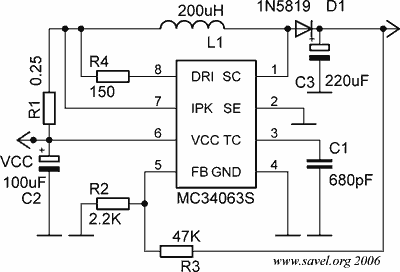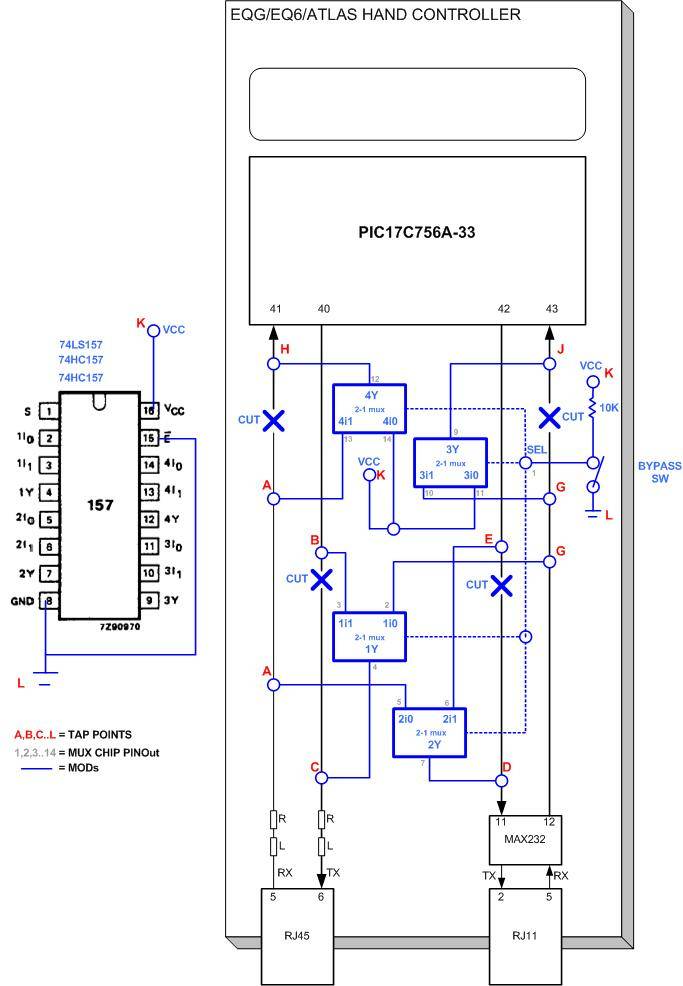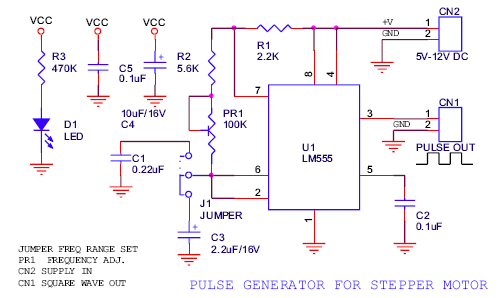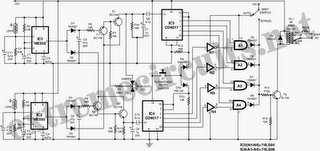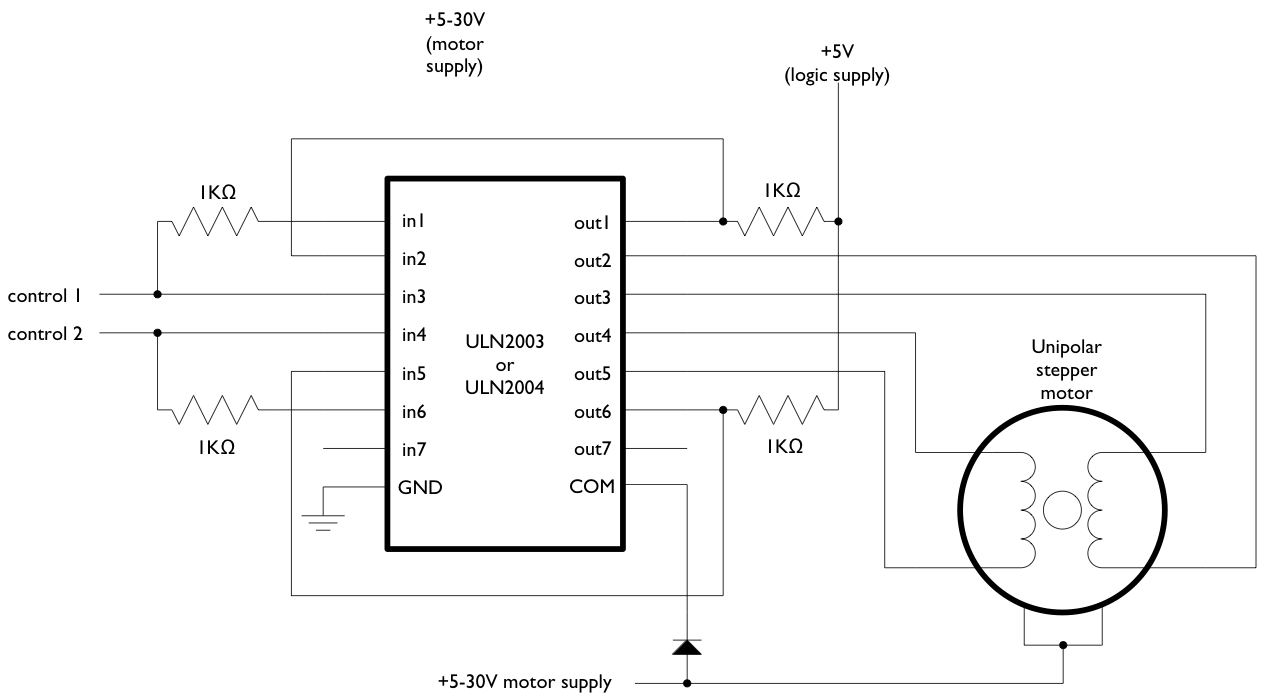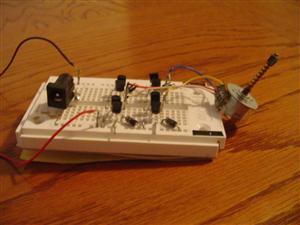
4 step 4017 sequencer

This week’s project involves a simple 4-step sequencer utilizing a 4017 decade counter chip. The fundamental schematic is based on a circuit that employs a 555 timer as a clock source. Modifications include using the outputs of the 4017 to drive transistors, which switch current to the pitch potentiometers instead of activating LEDs. Additionally, the RESET of the chip is triggered at step 4, rather than using all ten steps. The sound is produced by a modified toy piano. Each of the four steps in the sequencer is connected through a 100K potentiometer that adjusts the resistance to the piano, triggering different notes. A touch point has also been added to manipulate the sound.
The described circuit is a 4-step sequencer that leverages a 4017 decade counter for controlling the sequencing of sound output. The 4017 counter is typically used for counting applications, but in this case, it serves to control the timing and sequence of sound generation. The integration of a 555 timer as a clock source establishes a reliable timing mechanism that drives the sequencer through its steps.
In this design, each output of the 4017 is connected to a transistor that acts as a switch. When an output is activated, the corresponding transistor allows current to flow to a pitch potentiometer. This configuration allows for dynamic control of the pitch of the sound produced by the toy piano. The potentiometers are critical as they provide variable resistance, enabling the selection of different notes based on the sequencer's current step.
The decision to trigger the RESET function of the 4017 at step 4 limits the sequence to four steps instead of utilizing all ten outputs. This customization allows for a more compact and focused sequencing experience, which is particularly useful in musical applications where a specific pattern or melody is desired.
The sound generation is achieved through a modified toy piano, which has been adapted to interface with the sequencer. The output from the sequencer, after passing through the potentiometers, directly influences the notes played by the toy piano, creating a musical output that corresponds to the sequencer's steps.
Additionally, the inclusion of a touch point for sound manipulation introduces an interactive element, allowing users to alter the sound in real-time. This feature enhances the overall functionality of the sequencer, providing opportunities for creative sound design and experimentation.
Overall, the circuit combines foundational electronic components to create an engaging and versatile 4-step sequencer that can produce a variety of sounds and musical patterns.This weeks project is a simple 4-step sequencer based around a 4017 decade counter chip. The basic schematic is based on this circuit, using a 555 timer as a clock source: I changed it a bit by having the 4017 outputs drive transistors that switch current to the pitch pots (instead of turning on LEDS). Also, I triggered the chips RESET on step 4 i nstead of using all ten steps. The sound is generated by a toy piano that I hacked up. Each of the four steps in the sequencer is routed through a 100K pot that varies the resistance to the piano and triggers different notes. I also threw in a touch point for garbling up the sound. 🔗 External reference
The described circuit is a 4-step sequencer that leverages a 4017 decade counter for controlling the sequencing of sound output. The 4017 counter is typically used for counting applications, but in this case, it serves to control the timing and sequence of sound generation. The integration of a 555 timer as a clock source establishes a reliable timing mechanism that drives the sequencer through its steps.
In this design, each output of the 4017 is connected to a transistor that acts as a switch. When an output is activated, the corresponding transistor allows current to flow to a pitch potentiometer. This configuration allows for dynamic control of the pitch of the sound produced by the toy piano. The potentiometers are critical as they provide variable resistance, enabling the selection of different notes based on the sequencer's current step.
The decision to trigger the RESET function of the 4017 at step 4 limits the sequence to four steps instead of utilizing all ten outputs. This customization allows for a more compact and focused sequencing experience, which is particularly useful in musical applications where a specific pattern or melody is desired.
The sound generation is achieved through a modified toy piano, which has been adapted to interface with the sequencer. The output from the sequencer, after passing through the potentiometers, directly influences the notes played by the toy piano, creating a musical output that corresponds to the sequencer's steps.
Additionally, the inclusion of a touch point for sound manipulation introduces an interactive element, allowing users to alter the sound in real-time. This feature enhances the overall functionality of the sequencer, providing opportunities for creative sound design and experimentation.
Overall, the circuit combines foundational electronic components to create an engaging and versatile 4-step sequencer that can produce a variety of sounds and musical patterns.This weeks project is a simple 4-step sequencer based around a 4017 decade counter chip. The basic schematic is based on this circuit, using a 555 timer as a clock source: I changed it a bit by having the 4017 outputs drive transistors that switch current to the pitch pots (instead of turning on LEDS). Also, I triggered the chips RESET on step 4 i nstead of using all ten steps. The sound is generated by a toy piano that I hacked up. Each of the four steps in the sequencer is routed through a 100K pot that varies the resistance to the piano and triggers different notes. I also threw in a touch point for garbling up the sound. 🔗 External reference
